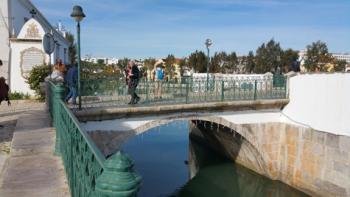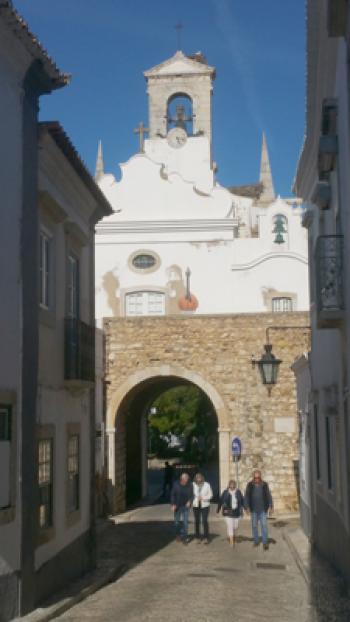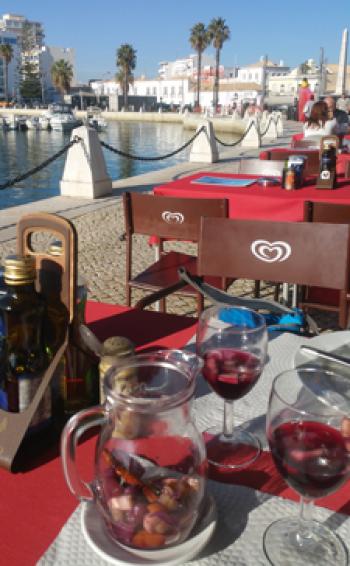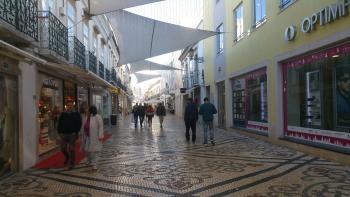Winter self-drive - Portugal’s Algarve (Third of three parts)
This item appears on page 47 of the May 2019 issue.
From our 6-night home-base apartment on the Quarteira seafront in the central Algarve of southern Portugal, my wife, Gail, and I planned self-drive day trips to Tavira and Faro.
Both cities are unique in that they are removed from the main tourist grid, positioned on inland estuaries and without easy or immediate access to the Algarve’s famed beaches. Easy beach access is an absolute requirement for the vast majority of visitors who migrate annually to the region for the lengthy sun-and-sand season, generally between June and October, when sea temperatures are most inviting. Our visit was in early December 2018.
Algarve logistics
Understanding regional logistics is an important aspect of planning a visit to the Algarve. The distance, as the crow flies, from the western tip of the Algarve at Sagres to the eastern tip on the Spanish border is 138 kilometers, or about 85 miles. On the ground, however, distances often feel many times more.
The geography of the region allows no option of simply leisurely wandering along a coastal roadway, exploring the seaside towns, beaches and other attractions along the way. In many areas, steep hillsides cascade to the very seafront, while in others, rivers, bays and large inland estuaries force self-drive explorers well inland to connect to the next seaside enclave, which, in some cases, may be only a stone’s throw away.
Not only is coastal town and village exploration very time-consuming, it often requires traveling on steep, narrow roads where the otherwise-friendly locals seem to take on a completely different, take-no-prisoners character once behind the wheel.
Of course, unlike visitors, they are familiar with the terrain and have no doubt as to where they are going. We quickly learned that the key to this type of exploring is to simply not be in a hurry and to take a “patience pill” prior to any driving excursion.
We wondered how the throngs of annual visitors manage their Algarve explorations, especially during the prime holiday season. What we learned is they don’t. For the vast majority of repeat visitors, their chosen Algarve bases serve essentially as destination resorts, even if they have access to autos.
They do not travel to the Algarve to explore. Instead, they travel to holiday at a very specific location, settle in and become consumed with the immediate environment and lifestyle, which essentially serves all their needs. For most, venturing any real distance from home base is done only to attend a fair, festival, concert or sporting event.
Tavira beckons
From our beachfront base in Quarteira, one day we traveled east to Tavira, an estuarine city considered by many to be the unspoiled jewel of the Algarve. It’s a place seemingly lost in time.
The well-preserved heart of the small city lines both sides of the Gilão River, connected by a Roman bridge with seven arches. From the middle of this pedestrian-only bridge, you can view marvelous buildings on both sides of the Gilão that have retained much of their 17th- and 18th-century origins. When we visited, the tide was out, and fishermen were foraging the shallows and mudflats for clams and other shellfish.
Tavira is perhaps best experienced just by wandering its cobblestone backstreets, where you can find tile-fronted townhouses with iron Juliet balconies often displaying the families’ wash on clotheslines.
With the feel of an invitation into the past, the town conveys the vibe of a place that wishes to remain undiscovered. Even the tourism office, off the main riverfront square, is easy to miss due to its discreet appearance.
The old market hall has been redone and now houses shops, restaurants, bars and cafés. It can be a good lunch stop for the day visitor.
We chose to lunch at a rather nondescript outdoor café on the smallish main square overlooking the bridge and river. By this time, I had become accustomed to enjoying the local beer for only €1.50 (near $1.70), which is even better with a view.
During the summer season, from the town center there is ferry access to a 10-kilometer-long island with a long, sandy beach. Nearby, at the salt pans of Quatro Águas, visitors can view the piles of salt crystals that are harvested in season.
For those with a special interest in architectural heritage, the town has produced a booklet about recent discoveries and their locations. Entitled “The Military Architectural Heritage of Tavira,” it can be obtained at the local tourist office.
Faro horizons
The Algarve region’s administrative center and largest city is Faro (pop. 70,000). With its inland waterway location, it is some 7 kilometers removed from the nearest beach, one of the reasons it is not really considered to be a holiday destination. The Faro airport is now busy year-round, receiving flights from many points in Europe.
On our day visit to Faro, Gail and I really had no idea what to expect. What we found was a largely undiscovered gem with an enviable quality of life. It is something of a bonanza in terms of cultural tourism.
We also identified and experienced the best way to discover Faro: free walking tours conducted by locals. For details, visit farofreewalking tours.com.
Our tour was conducted by a passionate guide, Carlos, who led us on a storybook journey of the town’s fascinating history through the centuries to the modern day. Along the way, he continuously shared enlightening bits of local culture.
We discovered how Faro’s protected location on the expansive Ria Formosa lagoon, with its string of barrier islands, had an important role to play in the region. We learned of the architectural contributions of the Romans, Arabs and other groups who occupied and controlled the area over the centuries.
We were mesmerized by the huge Old City walls and the many well-preserved buildings, including the Arco da Vila and the Faro Municipal Museum.
Our walking journey extended to 2½ hours because we also toured parts of the modern city. Carlos revealed that Faro’s affordable lifestyle is starting to be discovered, leading to escalating real estate prices.
A guided walk is the absolute best way to experience this overlooked diamond in the rough. There is no set fee for the free walking tours; guides depend on voluntary gratuities from participants.
Planning for the Algarve
Planning a visit to the Algarve is all about combining purpose with seasonal considerations. We wanted to experience the Algarve in the quiet winter season and made a commitment to avoid being on the go constantly or trying to always visit “just one more place.”
In my estimation, it would take at least three weeks to explore all of the deserving nooks and crannies of the Algarve region by auto. We made conscious choices as to which destinations to include and which to pass on during this initial 8-day visit.
Those relegated to “next Algarve visit” status included Sagres, on the far-western tip of the Algarve strip; the major party-time resorts of Portimão and Albufeira in the central Algarve, as well as Monchique and surrounds, embedded in the mountainous western-Algarve interior.
Portugal’s eclectic river and port city of Porto and the quieter northwestern Portugal coastline are, however, in our more immediate sights.
Contact Randy at 80 America Way, Jamestown, RI 02835; 401/560-0350, randykeck@yahoo.com.




